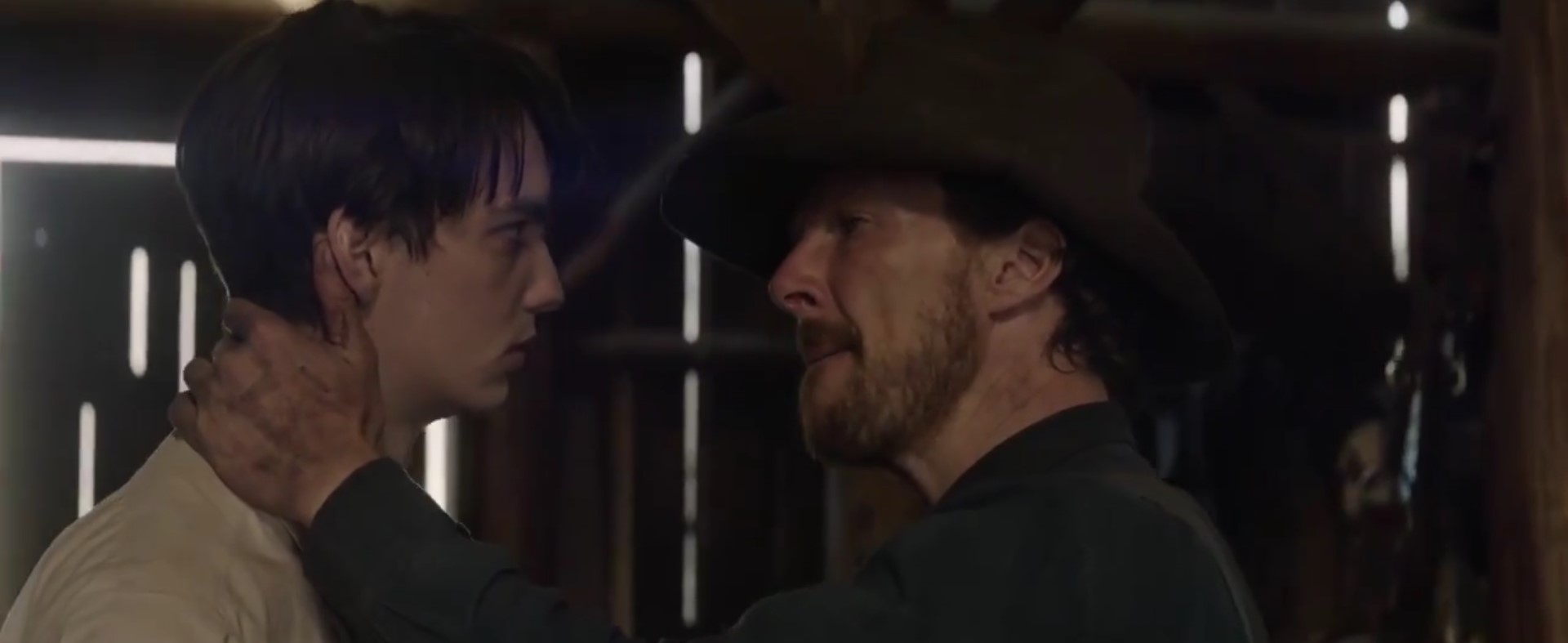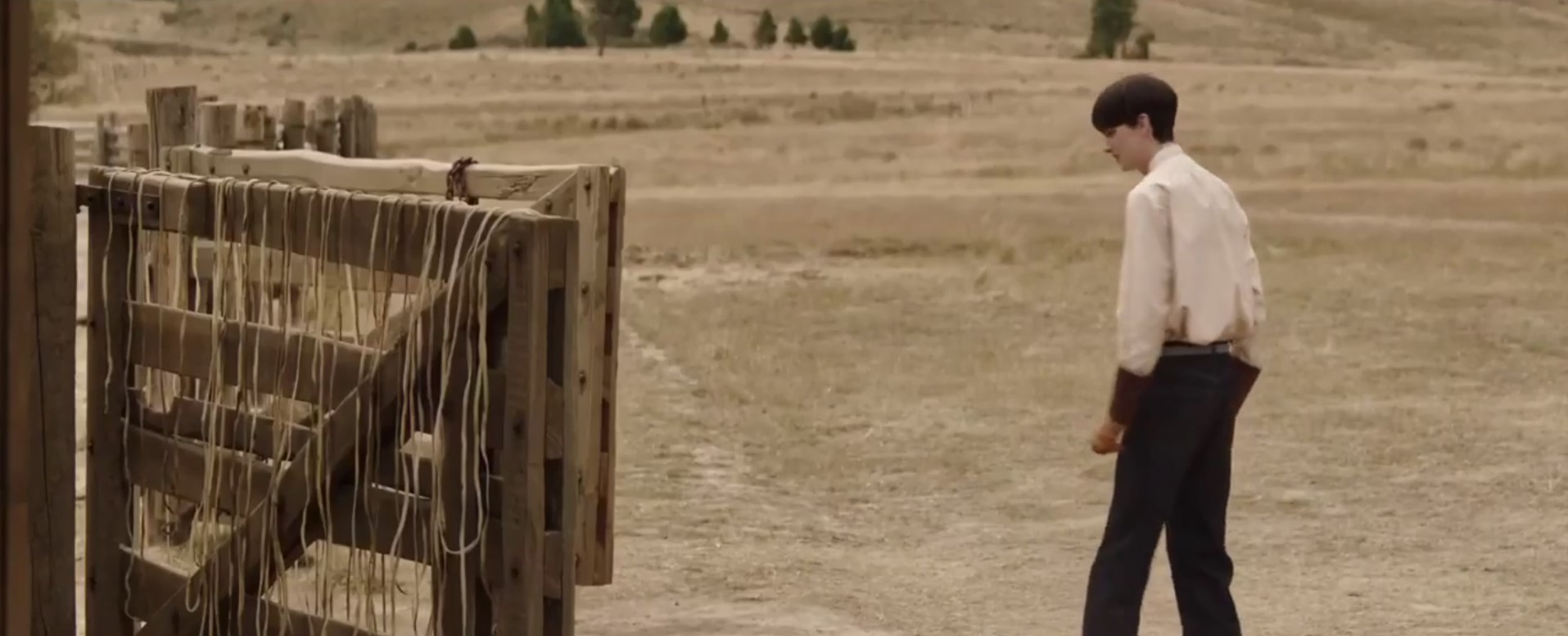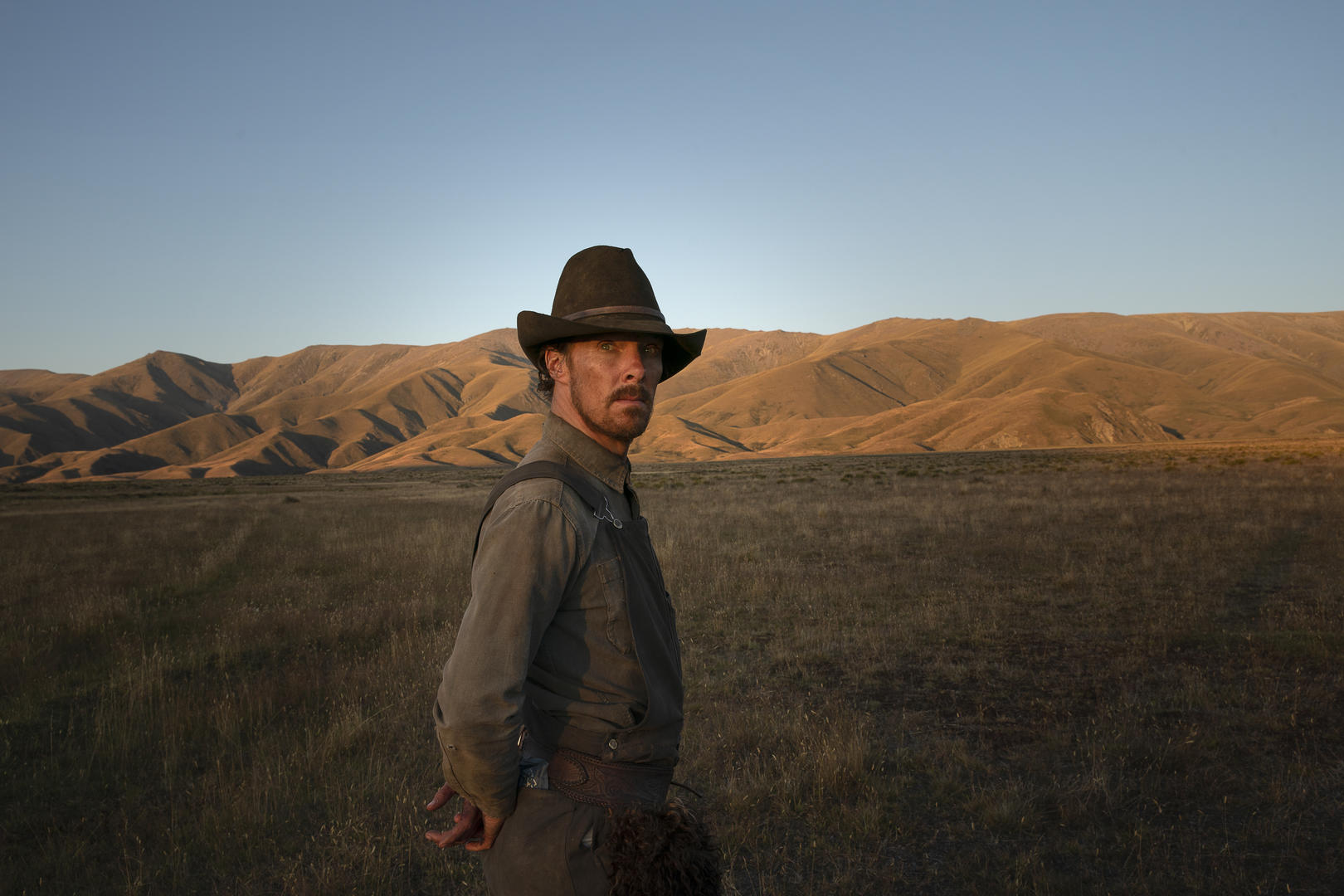In ‘The Power of the Dog,’ Jane Campion, one of the greatest auteurs of our time, explores the various facets of masculinity. Initially, Phil Burbank (Benedict Cumberbatch), his brother George Burbank (Jesse Plemons), and George’s new stepson Peter Gordon (Kodi Smit-McPhee) represent three extremely distinctive aspects of the 1920s end-of-the-Frontier era masculinity. However, as the film progresses and their personalities are laid bare, the distinction rapidly vanishes as roles start to shift like a game of musical chairs. Among them, George takes a back seat, serving more of a passive role, not just to his domineering brother but also his seemingly diminutive stepson.
After his withdrawal, the complex relationship between Phil and Peter becomes an unacknowledged battlefield. Peter wants to save his mother, Rose (Kirsten Dunst), from what Phil has become for her. Meanwhile, Phil’s actions are fuelled by his incessant grief over the loss of the default relationship he had with his brother. Eventually, the war ends with Phil’s death. If you are wondering how he dies and if Peter has anything to do with it, this is what you need to know. SPOILERS AHEAD.
How Does Phil Die?
In an expansive valley surrounded by distant jagged mountains in the 1925’s Montana, Phil and George break wild horses and raise their cattle. It’s the tail end of the Frontier era, and Phil, more than anyone else in the film, seems to represent that raw machismo of a disappearing time. He is surrounded by cowhands who virtually revere him. And it appears that he eagerly feeds their expectation by armoring himself inside a personality that is at times unnecessarily cruel and imposing.
Phil and George share a palatial home, which, just like Phil’s anger and the setting of the film, is boundless and desolate. And yet, the brothers have limited their existence to a room with twin beds. And it’s not to show how close they are but to enunciate how cripplingly — and yet subconsciously — co-dependent they are. This is even though Phil constantly belittles his brother.
The audience gets a glimpse of the real Phil in his moments of solitude when he is reminiscing about “Bronco” Henry, who was Phil’s mentor in more ways than one. He has successfully repressed his sexuality underneath layers of misogyny, in an example of conscious irony that shows that the world hasn’t changed that much after all this time.

Meanwhile, even if Phil is largely content about how their lives are, George isn’t. He desperately seeks companionship and love and finds it in Rose, a widow with a teenage son. As George marries her and brings her home, Phil suddenly finds himself pushed to the side by his own brother. So, he lashes out and drives Rose to alcoholism. Despite the dirt and grime Phil proudly sports, he is dangerously intelligent and educated. His actions are potent, ruthless, and imaginatively vicious. Rose’s previous marriage wasn’t particularly a happy one and ended with her first husband committing suicide. It doesn’t take much effort on Phil’s part to drive her to her erstwhile husband’s vice — alcohol.
Ultimately, her salvation comes from an unlikely source: her son. Peter is so thin that the modern world might consider him borderline anorexic. For most of the film, everyone, including his mother and the audience, underestimates him. And it’s only in the last section of the film that his true mettle starts to show. He hopes to become a physician and, at one point, dissects a rabbit with surgical precision. The film takes care to let us know that this part of Peter doesn’t come with psychopathic tendencies. He is still empathic, which is demonstrated in the scene in which he is alone in the wilderness with Phil and kills another rabbit with incredible gentleness.
After seeing Peter’s nonchalant response to the sexual slurs from cowhands, Phil’s behavior toward him drastically changes. The casting of Cumberbatch and Smit-McPhee as these two characters wasn’t a coincidence. Both have that tall and lanky appearance. Admittedly, Cumberbatch nowadays is more sinewy, but that ended up adding to the overall narrative of the film. Phil starts to see his younger self in Peter while likely envisioning himself playing the same role for Peter that Bronco did for him.
Earlier in the film, it is shown how almost religiously Phil avoids cattle afflicted with anthrax. In another case of conscious irony, Phil dies while trying to make a rope out of cowhide from a cow that died from the same disease. Phil’s need to make the ropes is again linked to his connection with Bronco. That’s why he explodes when he learns that Rose sold all the cowhides.
Does Peter Kill Phil?
Yes, Peter kills Phil. What happens between them is a form of subtle seduction on Peter’s part, and he executes it masterfully. Phil, or anyone else, doesn’t realize it until it’s too late. Peter puts on gloves and then collects a cowhide from a dead anthrax-afflicted cow and then cuts it up in thin strips. When Phil starts raging after discovering what Rose has done, Peter approaches him and offers him the strips, claiming that he wants to be like the older man, effectively reminding Peter of his relationship with Bronco.

Earlier, Phil sustained an injury on his hand. He dips that hand with the oozing wound into the water the cowhide strips have been placed for soaking, exposing himself to the disease and sealing his fate. Towards the end of the film, after Phil’s death, it is revealed that Rose has become sober. In Phil’s absence, she and George can look forward to a bright future together.
The film derives its name from Psalm 22 of the Old Testament: “Deliver my life from the sword, my darling from the power of the dogs.” Peter is shown reading the same passage in one of the final scenes of the movie. It’s Peter who emerges as his mother’s savior. He culls the evil from her life, the leader of the pack of dogs that caused her much torment.


You must be logged in to post a comment.